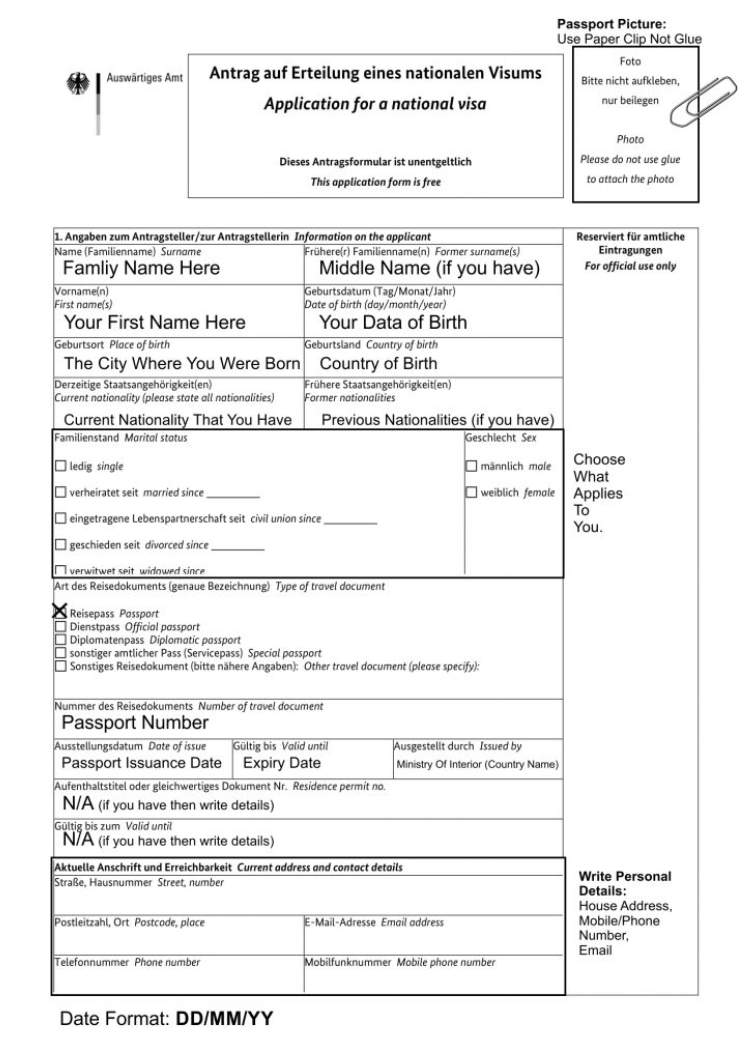Applying for university can be a daunting task for many students, especially those who are looking to apply to universities in a foreign country. This is exactly the case for students who are interested in studying in Germany. But not to worry! This guide will provide a step-by-step guide for anyone looking to navigate the German university applications process.
Whether you are a local student or an international student looking for a quality German degree, this guide is here to help. We will cover everything from the types of universities available to the documents you will need to submit your application. By the end of this guide, you will be well informed and ready to take the first steps towards studying at a German university of your choosing.
Finding the Perfect University
Choosing which university you want to attend could be a daunting task, especially if there are many options to consider. It is important to take your time to research, consider your options, and weigh the pros and cons for each school before you commit to one. Here are a few steps you should take when looking for the perfect university.
1. Research Your Options
The first step to finding the perfect university is researching your options. Find out what each school has to offer. Look at statistics such as acceptance rates, student-faculty ratios, graduation rates, and opportunities for internships and research. Research the type of degree programs offered, and if there are any specializations available. Additionally, look into the tuition and fees, as well as any available financial aid.
2. Consider Location
The location of the university you attend can make a huge difference in your college experience. Consider climate, distance from family and friends, and the cost of living in the city or town that the university is located in. It may also be beneficial to look into the culture and entertainment that the city or town has to offer.
3. Consider Your Major
Another factor to consider is the type of degree program that the school offers. If you have already decided on a major, look for universities that offer that major or related degrees. Additionally, consider departments that offer internships or research opportunities, as well as specializations in the field you are interested in.
4. Visit the Campus
Once you have narrowed down your list of potential universities, it is important to visit the campuses. Seeing the campus in person will give you a better feel for the university. You will be able to meet the professors, tour the facilities, and get to know the students. All of these factors can help you determine if it is the right university for you.
5. Take Your Time and Choose Wisely
Ultimately, it is important to take your time when deciding which university you want to attend. Research your options, consider location, explore majors and departments, and visit the campuses. Make sure you weigh all of the pros and cons for each school, and take your time to make sure you make the best decision for your future.
Filling Out a German Application Form

Applying to German universities can become a complicated process. With numerous deadlines, requirements, and forms each applicant must fill out, it’s essential to stay organized and on top of the entire process. This guide offers a step-by-step walkthrough of German university application form and how to make the most of it.
The first step is to find and validate the application form. Most universities use a standard form, the Antrag auf Zulassung zum Studium, which is available through the Uni-Assist website. You can easily print or complete the form online, but make sure to save a copy for your own records.
Next, fill out all of the required fields in the application form. Below is a list of the required fields:
- Personal information including name, date of birth, and address.
- Contact information such as phone number and email address.
- Educational information such as course name, school, and grades.
- A valid passport or ID.
- A copy of official transcripts.
- A valid language assessment certificate.
- Any additional information you may need to provide.
Once you’ve filled out the entire form, double check for any typos, inaccurate information, or omissions. It’s also important to sign and date at the end of the form before submitting it. You may also need to provide a notarized copy of the form.
Lastly, submit your finished application form to the appropriate institution. If you’re applying online, you may need to provide a scanned copy of the form or have it sent via email. Applications may also require payment of a fee, so make sure to double-check before submitting.
Following these steps carefully will help ensure that your application form is properly filled out and is accepted by the university. After submitting your application form, you’ll need to wait for further instructions from the institution.
Submitting Necessary Documents
One of the steps in the German University admission process is the submission of all necessary documents. Applicants should make sure that all documents reach the destination at least two weeks before the application deadline. The documents needed for submission include:
- High school and/or university certificates or diplomas
- Official transcripts of records
- English language proficiency test scores
- Curriculum Vitae
- Letter/s of recommendation
- Proof of finances
In addition to these documents, the university may ask for applicant’s passport, birth certificate and other necessary documents. It is important to note that documents should be originals, generally notarized, or certified photocopies. Applicants should also make sure that all documents are translated into German or English.
When submitting documents, it is important for applicants to take note of the specific instructions required by each university. In any case, applicants should strive to arrive in the application portal of the university or submit their documents to the admissions office as early as possible. This ensures that the university has sufficient time to review the applicant’s documentation and ensure their admission.
Conclusion
Applying to university in Germany requires a great amount of planning, research, and effort. The application process can be overwhelming and require adhering to various deadlines and documents. Yet with the right guidance, albeit frustrating at times, pushing yourself a bit out of your comfort level is well worth the reward. By following this step-by-step guide, international students can feel reassured that they have a good understanding on how to successfully apply to German universities.
By spending plenty of time on research and understanding the various requirements and step-by-step process for applying to a German university, international students will become prepared for their application submission and one step closer to their educational dreams. Remember, patience is key and no matter how overwhelming the application process may seem, success is possible.




